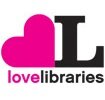How to research Art
This page uses the PLUS Model to help you understand the research process.

Plan – be prepared!
![]() Use a Research Planner to help you organise your thoughts. Ask the Librarian for a printed copy.
Use a Research Planner to help you organise your thoughts. Ask the Librarian for a printed copy.
![]() Talk to your teacher to make sure that you clearly understand the task.
Talk to your teacher to make sure that you clearly understand the task.
![]() Think about the theme or topic you have been given. You want to be clear about the things you already know before you begin:
Think about the theme or topic you have been given. You want to be clear about the things you already know before you begin:
- Try mindmapping or brainstorming to find ideas.
- Talk to your teacher – they will be able to help you think of the artists you need to research.
![]() Ask questions about your topic or artist:
Ask questions about your topic or artist:
- Look at this page on Artist Research
Locate – find your information!
![]() Use the Library! We will do what we can to help you.
Use the Library! We will do what we can to help you.
- The main Art shelves have the Dewey Code numbers 700-799.
- You will also find inspirational books in other sections as well. For example, we have books with wonderful pictures all over the Library.
- Remember to use your keywords in the indexes of books.
- Talk to the Librarian - I will help you as much as I can.
- Using the Internet. Start from this website – we have gathered lots of links to help you on your way.
Use – make notes and organise!
Some hints and tips:
Keep checking back to your Research Planner to make sure that you only gather the information that you need.
![]() So you think that you have found a good book
So you think that you have found a good book
Ask yourself these questions:
- Do you know who wrote the book? Does the book have any information about the author?
- Is this person qualified to write this book?
- Is there a contents page, an index and a glossary?
- Are the illustrations clear and helpful?
- How up to date is the book? Check the date to see when it was published.
- Does the book have a bibliography (list of resources)?
![]() So you think that you have found a good Website
So you think that you have found a good Website
Ask yourself these questions:
- What is the purpose of the site, to give information or to sell you something?
- Do you know who has produced the site? Can you contact him or her?
- Is this person qualified to write this site? Check site for details.
- Check the URL and domain. Did an organisation produce this site or was it made by a private person?
- How up to date is the site and information? Check the date it was last updated.
BEWARE of any sites where you cannot find out anything about the author of the site. Think about why anyone might want to hide this information.
REMEMBER not everything you read is true, whether in a newspaper, a book or on the Internet. It is very easy to put anything you like on the Internet!
ALWAYS get your information from more than one site so that you have as balanced a view as possible.
CHECK for bias. Remember that anyone can create a web page and say what they like. This happens all the time!
![]() What next?
What next?
If the information that you have found fits in with your topic, you have the following options:
NO - Print the page straight off the Internet. This prints everything, including adverts, and wastes a lot of paper.
MAYBE - Print some of the information.
MAYBE – Cut and paste words and graphics into Word or another document. But do not forget to acknowledge the source of your information – see advice below.
MAYBE – Photocopy/scan some of the information.
YES – Make notes straight from the screen or book. Write down your source of information.
DO NOT CLICK ON THE ‘PRINT’ BUTTON WITHOUT THINKING FIRST
![]() REMEMBER:
REMEMBER:
- Save your work regularly! Do not forget as you could lose your information if the computers should crash. Make sure that you give your document a sensible name that will mean something to you when you need it again.
- List your sources (where you got the information from) at the end of your work. If you do not do this, you are in effect stealing someone else’s work and breaking the law of copyright. Quote sources from the Internet in the same way that you would quote information from a book. Write down the author, title or website address. This should gain you extra marks and impress your teacher and the Librarian!
- If you want to know how to do this properly, ask the Librarian for the Helpsheet “How to Compile a Bibliography”.
- We have other Helpsheets available on using the Internet; please ask if you would like to have one.
Self-evaluate – did I work well?
These are the sorts questions that you need to ask yourself:
- Did I complete the task I was set by my teacher?
- Did I use a range of appropriate sources?
- Did I use my own ideas? Or did I just copy from the sources I found?
- Did I cite my sources properly and make a bibliography?
- Did I ask for help when I needed to?
- Could I have improved my work in any way?
- How will I do a better piece of work next time?





Recent Comments